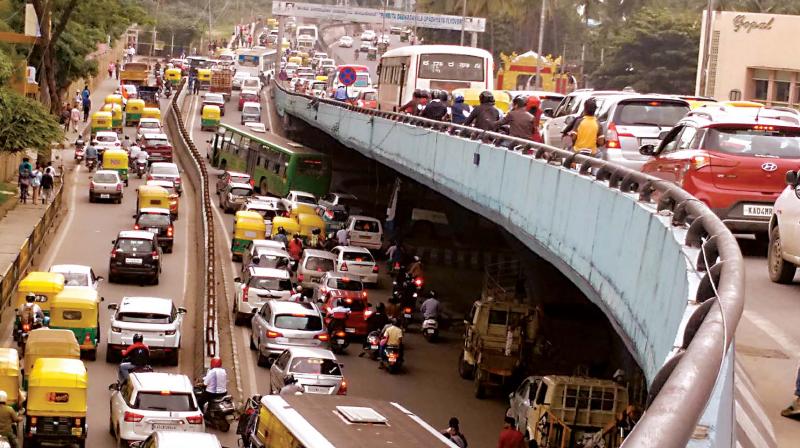Bengaluru needs elevated roads... as dedicated bus lanes

Bengaluru represents the unmatched success story of India’s entrepreneurial and industrial prowess. The city’s IT industry accounts for 35% of India’s $118 billion exports in IT/ITES sectors and employs over 10 lakh people. Bengaluru is also home to biotech, aerospace, defence, machine tool and garment industries.
With a population of close to 1.3 crore, which is expected to cross 2 crore by 2030, it is the fastest growing mega city of the world.
Due to this unprecedented growth and poor infrastructure, mobility has become the ‘Bane of Bengaluru’ with unending traffic jams, leading to huge loss of productivity and increasing pollution. “Brand Bengaluru” is truly suffering.
For a city of this size, efficient mobility demands 70-75% modal share of public transport but currently it is less than 50%. Out of this, BMTC contributes 90%, carrying 50 lakh people a day. Metro carries around 4 lakh people per day.
By 2030, with phase-3 or even phase 4/suburban rail operational, metro/suburban rail will have the carrying capacity of only 40-50 lakh people per day, even less than what BMTC carries today. Hence BMTC will continue to be the main public transport carrier which will need to carry 1.2-1.3 crore people per day in 2030, if Bengaluru has to move. That will require BMTC to have at least 20,000 buses, a three-fold increase from the current fleet of 6,500 buses.
People will give-up the comfort and convenience of their own vehicles if they can move faster in public transport. Today BMTC’s average peak hour speed is 8-10 km/hr. Since public transport (buses) moves slow and is difficult to reach, people use private vehicles, which renders slower movement of buses and more private vehicles coming on to the road, resulting in the gridlock which we witness on Bengaluru roads every day. It is a “Catch 22” situation.
So how do we make public transport a viable option by making it easily accessible and making it move faster.
Given that we have just 1,500 km of bus-worthy arterial/sub-arterial road network, which we cannot widen being a fully developed city, the only viable option is to go vertical and develop road-over-road to shift through traffic/goods transport to elevated section while providing for dedicated bus lanes on roads below with good quality footpaths/cycle lanes to ensure that buses are easily accessible and move faster. This will make more people give up their private vehicles in favour of public transport i.e. buses and metro.
Care should be taken to ensure that Elevated Corridors (EC) are only at the periphery of the City and do not enter/disrupt core city areas including CBD.
So “Elevated Corridors” above with “Dedicated Bus Lanes” below will actually facilitate greater adoption of public transport, contrary to the fears expressed by some.
—The writer is a Founder Director - Centre for Smart Cities

